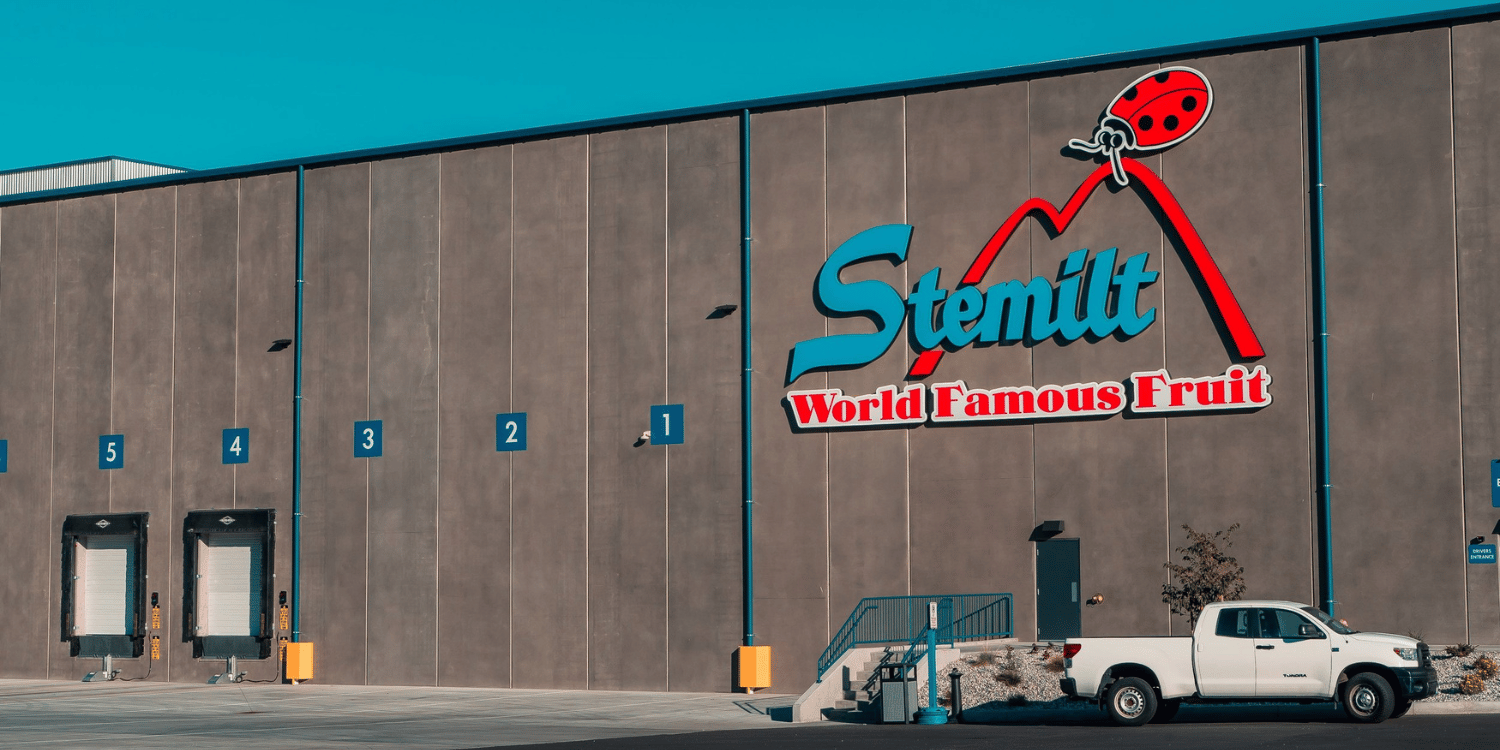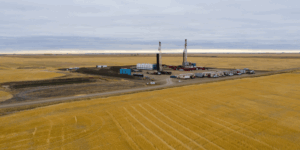In the ever-evolving world of global trade, cost-efficacy and efficient distribution methods stand as deciding factors for success.
The transportation and delivery of perishable goods, in particular, pose unique challenges.
Take, for instance, bananas, a widely consumed produce around the world.
Their preservation during transportation necessitates specific handling and logistical strategies.
The aim of this discourse is to explore feasible and economical ways of distributing bananas, in an attempt to minimize waste while maximizing profits.
This will involve an extensive review of current methods, potential improvements, and emergent technologies in the sector.
- Utilizing shared cargo spaces in existing ship routes
- Opting for cost-effective diesel-fueled trucks
- Deploying electric trucks for local distribution
- Using railway systems for long distances
- Implementing reusable packaging strategies
While the aforementioned strategies play a important role in devising cost-effective transportation for banana distribution, our discussion does not end here.
The upcoming sections will shed light on more critical aspects such as tackling the challenges posed by temperature-sensitive nature of bananas during transit and novel technologies that can revolutionize the banana distribution process.
These topics are of considerable importance to a comprehensive understanding of the banana supply chain. I’m confident these insights will further enhance your knowledge on the subject.
Stay with us as we navigate through these compelling insights together.
Cost-effective Transportation Solutions For Banana Distribution
1. Utilize Shared Cargo Spaces in Existing Ship Routes
In Short: Utilizing shared cargo spaces on existing ship routes is both a financially and environmentally-efficient solution for distributing bananas. Essential factors to consider include timely coordination, quality assurance, and fair price negotiation to maximize value while minimizing costs.
In examining cost-effective solutions for banana distribution, it can be advantageous to draw from an expansive pool of currently accessible resources.
One practical strategy is to utilize shared cargo spaces in existing ship routes.
Shipping routes are established lanes on bodies of water utilized by cargo ships.
These fixed itineraries have been enhanced over the years, focusing on factors such as distance, safety, and accessibility, with a purpose of easing the distribution of products such as bananas.
In many scenarios, there might be empty space on these cargo ships that have been paid for but are underused.
It would be cost-effective to share these spaces instead of chartering or purchasing an entire vessel for banana transportation.
Using this approach contributes significantly to a reduction in shipping costs.
Moreover, shared cargo spaces not only offer economic benefits but also balance environmental impacts, as the total carbon footprint of shipping is shared among different stakeholders.
This is a strategy worth exploring for banana producers who have an environmental responsibility apart from making profit.
However, to successfully implement this strategy, a few aspects should be considered. Here, I have listed a few points to give us better insight into some essential factors:
- Timely coordination plays a substantial role. It helps in ensuring that the sharing doesn’t bring about delays in shipment.
- The quality assurance of bananas should be given high importance. A company must ensure that their high perishability is appropriately managed during transit. This is where the condition of containers used for transportation is significant.
- Negotiating a fair price for shared space with shipping companies or other distributors should be a priority.
These are just a few of the considerations that a company distributing bananas should bear in mind while planning shared cargo spaces on existing ship trade routes.
The utilization of shared shipping spaces is a strategy that calls for a balance in economizing distribution expenses without compromising the integrity of the bananas being transported.
In the end, this strategy aims to cater to the demand of customers around the world while keeping distribution costs as low as possible.
Though it might require considerable planning and coordination among different players involved, accessing surplus capacity on existing ship routes is a potential win-win situation.
Pro Tip: To minimize distribution costs and positively impact the environment, consider utilizing shared cargo spaces in existing ship routes for banana transportation, and ensure timely coordination, quality assurance, and fair price negotiation.
Not only can the company distributing the bananas reap financial rewards, but they can also bolster their reputation as a sustainable, forward-thinking entity that understands the importance of preserving and respecting the environment.
Shared cargo spaces prove beneficial in handling large volumes and facilitating value-driven banana distribution practices.
This solution, as many others, poses challenges and has certain limitations; however, it provides a viable, cost-effective measure aligning with the goal of ensuring a seamless and economical banana distribution. It’s about maximizing value while minimizing costs, and most importantly, meeting the world’s demand for bananas within an economically advantageous and environmentally sound strategy.
2. Opt for Cost-Effective Diesel-Fueled Trucks
In Short: Diesel-fueled trucks are a cost-effective choice for banana distribution due to their greater fuel efficiency, innovative cleaner technologies, powerful payload capacities, and long-term durability. As retail price differences reduce and with fewer fuel stops required due to diesel’s high energy density, adopting these vehicles can lead to significant cost savings, increased efficiency, and quicker delivery times, particularly if future-oriented decisions are made such as switching to bio-diesel and investing in latest-generation diesel vehicles with lower emissions.
Within the broad spectrum of transportation options for banana distribution, a viable pathway to maintain cost-effectiveness is to engage diesel-fueled trucks.
While it might seem counterintuitive initially due to considerations associated with greenhouse emissions, this decision carries several strong points in the balance of cost versus environment.
First and foremost, diesel engines, especially in the case of heavy-duty trucks, are typically more fuel efficient compared to their gasoline counterparts.
Diesel fuel itself contains about 10 to 15 percent more energy than gasoline.
The outcome is that diesel vehicles get more miles per gallon. In layman’s terms, it signifies that a truck can transport bananas over a longer distance, reducing the overall fuel cost of delivery.
A consideration in our effective utility of diesel-fueled trucks relates to current developments in cleaner diesel technologies.
Diesel-engine manufacturers have been making strides in innovation, reduced emissions and improved fuel efficiency.
Some of the newer diesel engine models even meet the same emission standards as gas engines, a promising avenue for a greener approach towards cost-effective distribution.
Moving onto the strategic capacity of diesel-fueled vehicles, it’s pertinent to acknowledge that these trucks are known for their torque and towing power.
This factor allows heavy loads of bananas to be transported at once, maximizing the payload and reducing the number of trips required. The result is a lower distribution cost and increased efficiency.
Moreover, diesel trucks offer the advantage of durability and dependability.
Diesel engines are generally built to heavier duty standards than gas engines due to the greater compression ratio in the cylinders and higher combustion temperatures.
These aspects enhance the lifespan of these vehicles, proving diesel trucks to be a long-term economical choice for banana distributors.
Let’s highlight some of the key points on why diesel-fueled trucks can potentially be a cost-effective solution for banana distribution:
- Fuel-Efficiency: The high-energy content in diesel fuel in combination with more efficient engines keeps the MPG high and costs low.
- Continuous Innovations: Modern diesel technologies are striving towards cleaner, more environment-friendly solutions.
- Powerful Payload Capacities: The torque and towing capacities of diesel trucks ensure the maximization of each transportation trip.
- Durability and Longevity: Diesel vehicles can be a long-term investment due to their heavy-duty build and longer lifespan.
In addition to the considerations above, the retail purchase price difference is becoming less significant between diesel and gasoline trucks, owing to more manufacturers using diesel engines in light trucks and SUVs.
Lastly, diesel’s energy density means fewer fuel stops. This is clearly an added advantage when transporting bananas over long distances, as it would mean fewer delays and quick delivery times.
It’s evident that with careful planning, adopting diesel-fueled trucks for distribution can lead to significant cost savings, increased efficiency, and reduced transportation times.
While being mindful of the environmental impact, the scenario could be improved by future-oriented decisions, such as switching to bio-diesel and investing in latest-generation diesel vehicles with lower emissions.After all, a sustainable approach coupled with cost-effectiveness is the key to successful banana distribution.
As we explore other viable options in this series, let’s keep in mind that each approach carries its own merits, and a blended application of strategies might be the best path forward.
3. Deploy Electric Trucks for Local Distribution
In Short: Deploying electric trucks for local distribution of products, specifically bananas, provides a cost-effective and eco-friendly solution due to lower operating and fuel costs. Despite facing challenges such as the availability of charging stations, this approach aids in reducing greenhouse gas emissions and can be made feasible with strategic planning, financial incentives and urban development.
As we move towards eco-friendly distribution strategies, one key method being appreciated worldwide is the use of electric trucks for local distribution of products. In our case, bananas.
Electric vehicles, predominantly electric trucks, are absolutely pivotal in transforming the traditional banana distribution practices. They not only reduce harmful greenhouse gas emissions but are also economically feasible.
Credible research suggests that while electric trucks might have a higher upfront cost, their maintenance and fuel costs are significantly lower than those of diesel trucks.
This makes the electric truck a worthy investment for our banana distribution efforts in metropolitan areas, where distances aren’t as vast and charging stations are readily available.
Essentially, if strategically planned, a fleet of electric trucks can make local distribution not only eco-friendly but also cost-effective.
Consider some of the key benefits of using electric trucks in our distribution efforts:
- Zero emissions: This is a win for the environment and an effective way to combat climate change.
- Lower operating costs: Electric trucks have fewer moving parts and require less maintenance, saving on service costs.
- Reduced fuel costs: Unlike diesel trucks, electric trucks run on electricity, which is much cheaper.
Furthermore, several countries are currently offering various tax incentives and subsidies to organizations that opt for this green alternative, which can help reduce the overall cost of electric trucks.
Any doubt about the long-term effectiveness of electric trucks can be soothed by observing many corporate moguls’ actions, such as Amazon and DHL, which have heavily invested in electric trucks for their local distribution operations.
Fruit distribution companies can take a page out of their books and promptly adapt to this beneficial trend.
However, this doesn’t mean the transition to electric trucks will be smooth and devoid of challenges. In fact, one of the biggest hurdles is the adequate availability of charging stations.
While urban areas are gradually being equipped with charging stations, in more remote or less densely populated areas, the lack of charging stations could pose significant problems.
But, with progressive urban planning and with the automobile industry’s push towards electric, these challenges can be overcome.
Let me tell you, as we continue to explore cost-effective transportation solutions for banana distribution, electric trucks offer an innovative, sustainable, and financially viable choice for local distribution.
4. Use Railway Systems for Long Distances
In Short: Using railway systems for long-distance distribution of bananas is more reliable, cost-effective, and can transport larger quantities. However, considerations such as infrastructure, cost-per-distance, and transport regulations are essential for optimal application of this mode of transportation.
When it comes to distributing bananas over long distances, one of the most cost-effective transportation solutions is to utilize railway systems.
This is because trains are able to carry larger quantities of goods, including bananas, as compared to other modes of transport such as trucks.
Furthermore, railways are generally considered to be a more reliable form of transportation, with fewer unexpected delays or cancellations that could potentially affect the quality and freshness of bananas.
Operating and maintenance costs of railway transportation are also significantly lower in comparison to other modes of transport like air and road.
This implies that bananas can be transported in large quantities at a relatively lower cost, saving the distributor a significant amount in transportation fees.
While these are just general advantages, there are specific aspects of using railway systems for transportation that may influence their cost-effectiveness.
Before highlighting the aspects of railway transport, let’s discuss some of the key considerations:
- Railway Infrastructure: Ensuring robust and well-maintained railway tracks can reduce the risk of accidents and delays.
- Cost-per-distance: Railways tend to be more cost-effective over long distances as compared to short distances. A cost-benefit analysis is therefore needed to determine if it is economically viable to utilize railway transportation for your specific distribution routes.
- Regulations : Various countries have different rules and regulations relating to railway freight transport. Understanding these laws is important to avoid penalties or legal issues.
As a result, to effectively peg railway systems as a cost-effective solution, a distributor must take into account these specific factors and align them with the requirements and constraints of their specific banana distribution network.
For instance, if a distributor has established long distance routes that penetrate various regions, and the railway infrastructure in these regions is adequate then railway systems is a viable cost-effective solution.
However, the use of railway systems may not be necessary for short-distance deliveries, considering the cost and time of loading and off-loading the goods. In this case, the use of electric trucks for local distribution might be a better alternative.
While this might fall outside the scope of this section, the combination of different transportation modes might provide the most cost-effective solution for banana distribution. This means not solely relying on railway transport, but incorporating it into a larger, multi-modal strategy.
Railway system is without a doubt a important part of a cost-effective long-distance banana distribution strategy and with proper planning and consideration of various factors, it can lead to significant savings in the distribution process.
5. Explore Technology-Enabled Route Optimization Services
In Short: Technology-enabled route optimization services allow for cost-effective, highly efficient transportation solutions in industries such as banana distribution. They offer real-time tracking, minimized fuel consumption, enhanced customer satisfaction, and the flexibility of multiple pickup and drop-off points.
Distribution companies, especially those focused on perishable goods such as bananas, are consistently seeking cost-effective transportation solutions.
A relatively recent development in transportation management is the use of technology-enabled route optimization services.
As the name suggests, these services facilitate the perfect allocation of resources by endorsing the most efficient paths for transportation based on real-time data and elaborate algorithms.
By adopting methods driven by digital intelligence, these services immensely aid in the reduction of both time and cost, hence they are a pivotal component in creating a cost-effective transportation solution for banana distribution.
Technology-enabled route optimization services provide a plethora of benefits to businesses managing large scale distribution.
Before we dig in into the specifics, here’s a brief list of some of the critical benefits that they provide:
- Real-time tracking: This allows for immediate adjustments to be made to the route based on changing circumstances like traffic, weather conditions etc.
- Minimized fuel consumption: By encouraging the most efficient path, these services automatically concede to lesser fuel consumption which eventually leads to substantial cost savings.
- Enhanced customer satisfaction: By reducing the time taken in transit, customer satisfaction is significantly improved. This is crucial as customer satisfaction directly impacts business sustainability.
Technology-enabled route optimization services are equipped with advanced algorithms that can process massive amounts of data incredibly fast to offer the most efficient distribution routes.
This implies that even if a route were optimal a week, a day, or even an hour ago, it may not be optimal now.
Real-time tracking and immediate updates are thus not a luxury, but a necessity for businesses dedicated to ensuring cost-effective and timely delivery of their products.
It’s also worth mentioning that advanced route optimization also provides the ability to plan for multiple pickup and drop-off points, which are quite common in banana distribution and other similar businesses.
Implementing a route optimization service is an investment, and like any other, it requires careful analysis and foresightedness.
While initial setup and integration may require substantial resources, the benefits of technology-enabled route optimization far outweigh the expenses in the long run.
Important: The integration of an efficient technology-driven route optimization service is critical in achieving cost-effectiveness in banana distribution, providing benefits such as real-time tracking, minimized fuel consumption, and enhanced customer satisfaction.
With the world becoming more and more data-driven, the effectiveness of such digital tools in enhancing operational efficiency cannot be underestimated.
While in the quest for achieving cost-effectiveness in banana distribution, the integration of an efficient technology-driven route optimization service is critical.
6. Implement Reusable Packaging Strategies
In Short: Implementing reusable packaging strategies, such as using plastic crates, offers both environmental and financial benefits for sustainable banana distribution, including waste reduction and cost savings. Key points such as quality, resilience, and cost should be considered, alongside harnessing technology to track usage cycles.
In the domain of cost-effective transportation solutions for banana distribution, it is essential to acknowledge the implications and potentials of implementing reusable packaging strategies.
The deployment of reusable packaging offers an environmentally and economically forward-looking approach.
Primarily, its usage promotes the reduction of waste produced during banana transportation which in turn promotes sustainability within the industry.
Moreover, it harnesses financial benefits that have typically been overlooked.
The concept of reusable packaging revolves around the idea of reusing or refurbishing packaging materials as opposed to consistently purchasing and disposing them.
Prior midst of reusable packaging, there are certain key points that should be taken into consideration:
- Quality: The durability and strength of reusable packaging materials should be high quality to ensure they stand the rigorous demands of transportation and performance.
- Resilience: These materials should be capable of withstanding varying temperature and humidity conditions, especially considering the inherent perishability of bananas.
- Cost: The financial implications of opting for reusable packaging should be thoroughly analyzed. The initial cost might be higher, but the return on investment over time should be taken into account.
By integrating reusable packaging materials such as plastic crates instead of traditional cardboard boxes, organizations can experience substantial cost savings.
These materials are designed to last longer, capable of being used and reused over numerous cycles, unlike their single-use, disposable counterparts.
Moreover, benefits stretch beyond financial aspects as the crates provide an added layer of protection as compared to cardboard boxes, ensuring higher quality of the delivered fruits.
The process of transitioning to reusable packaging also encourages innovation in the logistics sector of the industry.
Strategic planning, foresight, and collaboration among various stakeholders will be necessary to implement this change effectively.
Pro Tip: To increase sustainability and cost-efficiency in your banana distribution process, consider implementing reusable packaging strategies, ensuring the chosen materials are of high quality, resilient to varying conditions, and analyzed for long-term financial return.
Notably, the utilization of technology should not be sidelined in this context as it can play a crucial role in tracking the usage cycle, location, and condition of these reusable packages.
Overall, implementing reusable packaging strategies is a significant step forward towards establishing a more sustainable and cost-efficient banana distribution process.
The Bottom Line
The adoption of cost-effective transportation solutions greatly streamlines banana distribution processes, enhancing efficiency while maintaining quality.
Through such approaches, we not only ensure the freshness and usability of the bananas but also significantly cut down unnecessary costs that customers may have to bear.
Fundamentally, leveraging these transportation solutions could prove transformative for the banana distribution industry, potentially revolutionizing supply chain management.
Overall, efficient, cost-effective transport alternatives are undoubtedly the future of banana distribution, contributing majorly to the sustainability and economy of these operations.




















